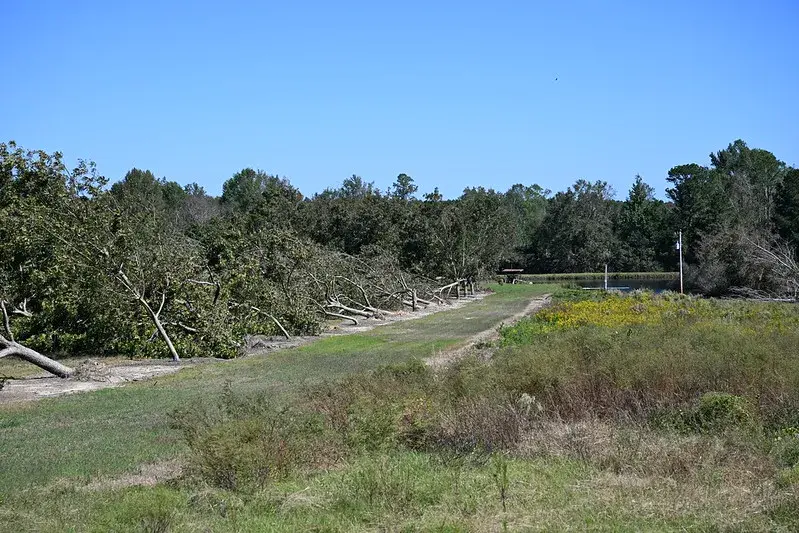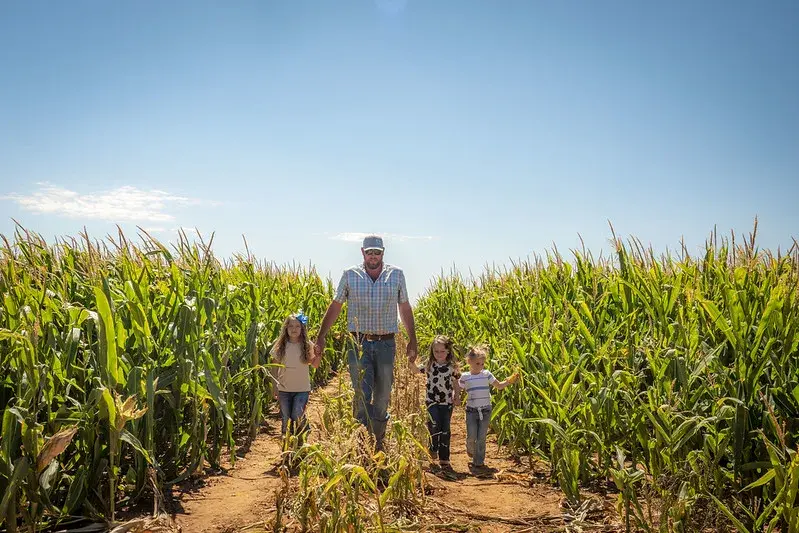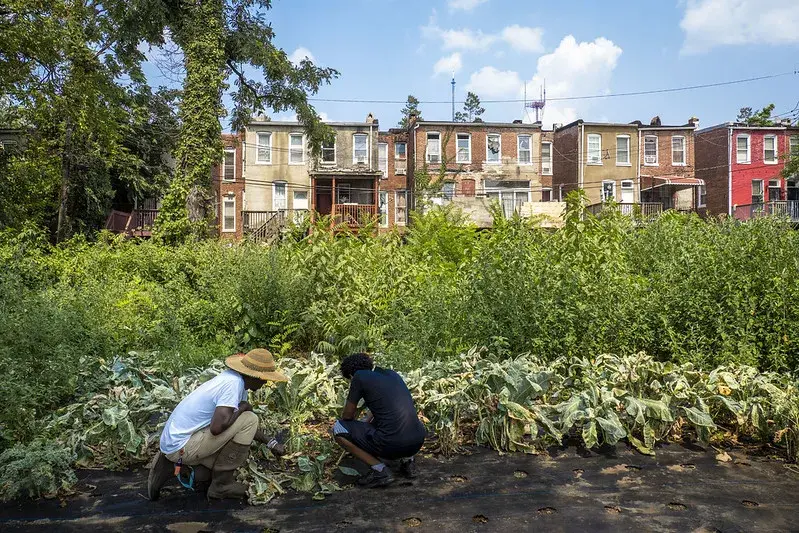USDA’s Farm Service Agency – often referred to as the “front desk” of USDA due to our direct engagement with America’s farmers and the offices we operate in nearly every county – is taking a look back at the successes we’ve achieved since 2021 to deliver on our unwavering dedication to farmers and ranchers in the face of new challenges and opportunities.
By listening to farmers, ranchers, and employees, we’ve adapted our programs and our thought processes to meet expressed needs, pursue equity, and embrace innovation. Looking ahead, this commitment remains central to ensuring the success of producers, the agency, and the sustainability of American agriculture.
Key highlights include:
Responding to Disasters
Since 2021, we have made significant strides in adjusting policies to reflect the realities faced by producers.
Examples include:
- Increasing the Livestock Indemnity Program (LIP) payment rates and making additional livestock eligible.
- Changes to the Emergency Assistance for Livestock, Honey Bees and Farm-Raised Fish Program (ELAP), which included added compensation for hauling feed to livestock and livestock to forage or other grazing acres. Additionally, we added fish raised for food as an ELAP-eligible commodity because producers and industry leaders expressed the need and added milk loss for dairies impacted by H5N1.
- For LIP and ELAP, the requirement to submit Notices of Loss within a pre-determined number of days was waived, aligning the Notice of Loss requirement with the programs’ application deadlines. This simplified the process for the producers as well as increasing efficiency for the FSA offices.
- We’ve improved our responsiveness through the Emergency Conservation Program (ECP) and Emergency Forest Restoration Program (EFRP) by rolling out policy flexibilities for environmental reviews required within these programs and providing some cost-share seed money to help with up-front expenses, when previously all cost-share was only awarded after the work was complete.
Over the past four years, FSA has delivered significant program benefits for feed, water, and grazing losses, impacts of H5N1 on dairies and eligible animal mortality to livestock producers including a combined $6.6 billion delivered through LIP, the Livestock Forage Disaster Program (LFP), and ELAP.
Additionally, we provided nearly $436 million to address impacts to the land. The ECP and EFRP cost-share programs assist producers in rehabilitating crop and grazing land and nonindustrial private forest land and repairing/replacing fencing destroyed by natural disaster.

Two other disaster programs, the Noninsured Crop Disaster Assistance Program (NAP) and Tree Assistance Program (TAP) target the needs of our specialty crop producers, including producers of crops for which commercial insurance is not available, and producers of commodities grown on trees, bushes, and vines. FSA has delivered more than $1 billion in NAP and TAP benefits to eligible producers who incurred natural disaster losses.
In response to needs created through unprecedented weather or market-related circumstances, we implemented programs authorized by Congress and did so in a way to ensure fairness to all producers by streamlining the application process as much as possible. This included:
- The Pandemic Assistance Revenue Program (PARP), an ad-hoc assistance program providing $196.5 million of support in response to impacts from the COVID-19 outbreak.
- Almost $1.2 billion through the Emergency Livestock Relief Program (ELRP), for livestock producers impacted by natural disaster such as drought and wildfire in 2020, 2021, and 2022.
- $10.1 billion through the Emergency Relief Program (ERP) to deliver emergency relief funding to producers of crops, trees, bushes, and vines that were impacted by natural disaster in 2020, 2021, and 2022.
- Finally, the Marketing Assistance for Specialty Crops (MASC) program, which will provide financial assistance to specialty crop producers, recognizing the unique impacts to this sector such as crop perishability, the need for specialized handling and transport equipment, and higher labor costs. Last week we completed sign up for the MASC program and as a result, more than 55,000 specialty crop producers will receive assistance they can use to grow and sell their crops in 2025.
Transforming the Farm Loan Programs While Supporting Distressed Borrowers
FSA improved its farm loan programs and in 2023 enacted policies that will have a positive impact on family agricultural operations for generations to come. These historic policy improvements and a seismic shift in how we conduct business through lending mark the most significant changes in four decades. Key progress includes a low-interest installment set-aside program for distressed borrowers, flexible repayment terms to improve profitability, and reduced collateral requirements to empower borrowers to leverage their financial equity.
Additionally, for the over 85,000 direct loan borrowers and over 26,000 producers who submit a direct farm loan application annually, FSA introduced new online tools like the Loan Assistance Tool, streamlined online application, and faster loan approvals to revolutionize the borrowing experience. These changes not only make credit more accessible but also enable producers to strategically expand their operations.
The Inflation Reduction Act enabled USDA to deliver $2.74 billion in assistance to over 58,000 distressed farm loan borrowers. This critical support provided financial relief and stability to producers, ensuring they can continue contributing to our nation’s agricultural economy during challenging times.
This assistance has been a lifeline to many farmers who were on the verge of losing their operations due to circumstances beyond their control. The assistance to distressed borrowers has also given FSA important and unprecedented insight into the challenges farmers are facing, which has informed some of the updates to our programs. We've compiled a report on the impacts of this historic program, which you can read more about here.

FSA has made substantial investments in advancing equity within agriculture. Through the Increasing Land, Capital, and Market Access Program, $300 million was allocated to projects aimed at helping underserved farmers and ranchers.
In September 2023, USDA announced that agricultural employers can begin to apply for a new grant program focused on addressing labor shortages in agriculture, reducing irregular migration through expansion of legal pathways, and improving labor protections for farmworkers.
Other efforts include increased access to NAP coverage for socially disadvantaged, beginning, or veteran producers and entering into collaborative agreements with trusted stakeholder organizations to provide education and technical assistance.
Financial Safety Net
FSA’s financial safety net programs provide ongoing support when market fluctuations create economic challenges for our producers. Through the Agriculture Risk Coverage/Price Loss Coverage Programs, we’ve delivered $3.4 billion in commodity crop safety net assistance, and through the Dairy Margin Coverage program we’ve delivered $2.6 billion in assistance to the nation’s dairy farmers.

Climate-Smart Solutions
FSA has positioned itself as a leader in advancing climate-smart agriculture and helping more farmers adopt these practices. Recent updates to the Conservation Reserve Program (CRP) include a new climate-smart practice incentive and increased payments for water quality improvements. We’ve worked to improve and expand CRP through higher payment rates, new incentives, and a more targeted program focus, which included emphasizing state-level partnership programs through the Conservation Reserve Enhancement Program (CREP).
During these four years, we’ve added:
- 4.3 million acres through four CRP general signups, 2.9 million acres through seven signups for continuous CRP and CREP agreements and expanded CRP Grasslands by 7.9 million acres during four signups. In total we added 15.2 million acres into CRP.
- This, combined with ongoing contract acres in the program, brings us to 26 million CRP acres today, not far from the 27 million statutory cap on acres.
To enhance program outcomes, FSA invested $21 million in monitoring and evaluation projects. These initiatives assess CRP environmental benefits, such as wetland restoration and wildlife habitat contributions, ensuring that FSA programs deliver long-term conservation wins.
Additionally, we began development of the FSA Web Environmental Analysis Tool (WEAT), an innovative environmental review tool that uses geospatial data to streamline the environmental review process for categorical exclusions, allowing us to get program assistance to producers faster.
Building Stronger Tribal Relations
For the first time, FSA signed CREP agreements with tribal nations, reflecting a historic commitment to supporting Indigenous agricultural practices. Updates to livestock programs, including the recognition of tribal traditional animals in payment calculations, further affirm FSA’s dedication to respecting and preserving tribal agricultural heritage.
We launched a tribal Partnerships page (farmers.gov/tribal) to better connect tribal nation leaders, land managers, agricultural producers, and citizens with USDA programs and services. We developed new tools to streamline and create a more productive experience for new and prospective customers, agricultural partners, and technical assistance providers, including packets for individual and entity customers and tribal nations to guide federally recognized tribal governments in the FSA enrollment process and to help tribal nation staff navigate tribal specific eligibility provisions. specific eligibility provisions.
Investing in Urban Agriculture
Recognizing the growing importance of urban agriculture, FSA established 17 Urban Service Centers, with 10 more underway. Advances in acreage reporting software now allow producers to report crop data for spaces as small as 2.5 inches by 2.5 inches, making it easier for urban farmers to participate in FSA programs.

Modernizing our Technology
In addition to the advances we described in our online tools for current and prospective farm loan customers, we’re keeping up with 21ˢᵗ century demands, by adopting new technological enhancements to match how some customers may prefer to do business. This includes launching an updated, more mobile-friendly website. Whether you are doing a web search on how to get disaster assistance, searching for a program that meets your unique needs, or looking for who to contact when you need that extra support, the website is an easy and inviting space to start.
We also deployed new customer kiosks to every county office nationwide. These kiosks help to streamline your visit to your local county office and easily access a variety of features such as signing FSA documents, utilizing the Loan Assistance Tool, browsing USDA programs, accessing the internet, accessing necessary personal information, and signing up for a Login.gov account, which provides access to farmers.gov level two features and other USDA and U.S. Government web resources. Future kiosk functionality enhancements include a customer check-in application, self-service option for FSA program applications and documents, financial inquiries, and more.
In summary, these collective and extensive accomplishments reflect our commitment to supporting farmers and ranchers as they feed our nation and drive rural economies. Moving forward, FSA remains dedicated to innovation, equity, and continuous improvement, ensuring that American agriculture thrives.
Farm Service Agency:
1400 Independence Ave.
SW Washington, DC 20250
Contact:
FPAC Press Desk
FPAC.BC.Press@usda.gov
